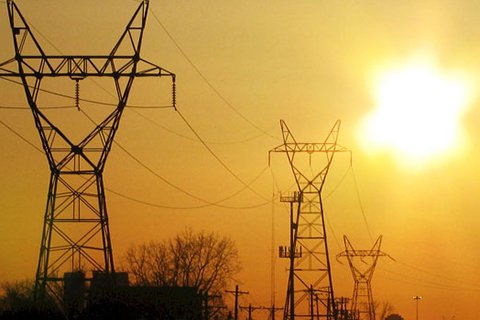Four University–private sector partnerships win grants to advance renewable electricity in Minnesota

MINNEAPOLIS / ST. PAUL (05/17/2016) – Finding a new way to turn heat into electricity is among the goals of four collaborative research initiatives awarded $717,360 each in funding this month from the Institute on the Environment’s Renewable Electricity for Minnesota’s Future grant program. Three other projects will develop technology to lower the variability of wind energy output, advance a novel strategy for producing low-cost photovoltaic cells, and produce an interface to connect renewables to storage and power grids. The projects reach across disciplines at the University and include private sector partners to accelerate the transition to renewable energy.
“These projects show great promise to produce tangible, low-cost technologies to move Minnesota into the next generation of electricity generation,” said Institute on the Environment managing director and COO Lewis Gilbert. “Involving businesses in the development of these technologies has the advantage of testing on-the-ground scenarios where they have a better chance of being more quickly adopted and used.”
The Renewable Electricity for Minnesota’s Future grant program was established in 2015 with a $3 million block grant from Xcel Energy’s Renewable Development Fund and $135,000 matching funds from the University. Its goal is to support interdisciplinary projects that increase market penetration of renewable electric energy resources; promote start-up, expansion and attraction of renewable electric energy projects and companies; stimulate research and development into renewable electric energy technologies; and develop near-commercial and demonstration-scale renewable electricity–related projects in Minnesota.
A panel of 11 nationally recognized energy experts chose the following projects to receive grants:
Direct conversion of heat to electricity
Richard James, Distinguished McKnight University professor, College of Science and Engineering; and Bharat Jalan, assistant professor, CSE
Project Partner: Daikin Applied (formerly McQuay International)
The researchers will develop devices to convert waste heat to electricity. Their method uses thin crystalline films that can convert common natural and waste heat sources (such as air conditioning systems) to electricity.
Grid interface for renewables, storage and green micro-grids
Ned Mohan, professor, CSE; William Robbins, professor, CSE; Murti Salapaka, professor, CSE; Peter Seiler, assistant professor, CSE and IonE fellow; Sairaj Dhople, assistant professor, CSE
Project Partners: Analog Power Devices, Inc.; Cummins Power Generation; U.S. Naval Academy
The project team will develop a new electronics-based interface for connecting renewable electricity sources and battery storage with the utility grid. This novel interface will have the flexibility to operate at low voltages for community-scale plants but can be scaled up to accommodate higher voltage and power levels. The interface could also provide ancillary services and control flexibility to maintain grid stability as more wind and solar power join the mix.
Controlling wind plant power
Lian Shen, associate professor, CSE and St. Anthony Falls Laboratory; Michele Guala, assistant professor, CSE and SAFL; Jiarong Hong, assistant professor, CSE and SAFL; Jeffery Marr, associate director of engineering and facilities, SAFL; Joseph Nichols, assistant professor, CSE; and Peter Seiler, assistant professor, CSE, and IonE fellow
Project Partners: Sandia National Laboratories; University of Illinois at Urbana-Champaign; WindLogics
This project team aims to lower the variability in wind energy output and so improve the efficiency and reliability of wind plants using supercomputer-based simulations, laboratory and field measurements, and modeling. The project is the first of its kind to involve numerous turbines in a realistic setting.
Pyrite iron disulfide: Low-cost solution for renewable electricity
Eray Aydil, CSE professor and Ronald A. and Janet L. Christianson Chair in Renewable Energy; Laura Gagliardi, Distinguished McKnight University professor, CSE; Chris Leighton, Distinguished McKnight University professor, CSE
Project Partners: tenK Solar Inc.; Physical Electronics Inc.
This project will pursue the development of pyrite iron disulfide (FeS2), an Earth-abundant chemical, as a sustainable light-absorbing material for low-cost solar cells. Capitalizing on their recent discoveries, the researchers will investigate two related approaches to making pyrite-based solar cells that have never previously been possible: 1) making solar cells only from FeS2 and 2) combining FeS2 with silicon to reduce the cost of commercial silicon solar cells.
The Institute on the Environment is leading the way toward a future in which people and the environment prosper together. For more information, visit environment.umn.edu.
